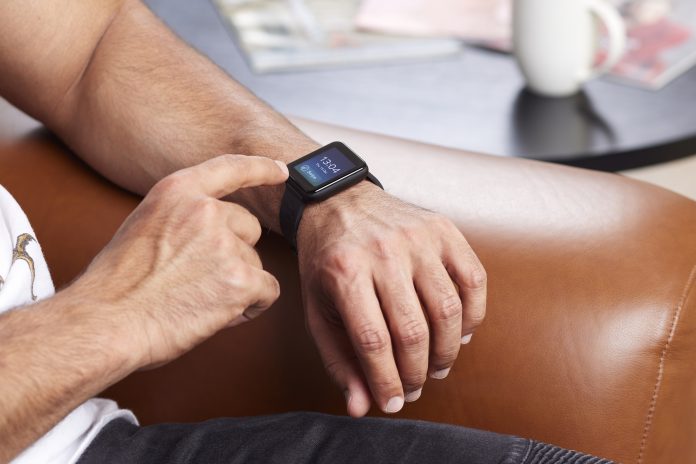In an interview with Clair Mace, a Lead Specialist Parkinson’s Nurse, Open Access Government examined what the Personal KinetiGraph® (PKG) can really do for patients and clinicians dealing with Parkinson’s disease
Having had experience using the Personal KinetiGraph® (PKG) for 6 years, Clair Mace was able to provide a first- hand look into the real value of the PKG for both patients and their doctors.
What makes the wearable nature of the PKG so valuable?
Clair explained how the ability to collate data over a 6-day period helps clinicians understand whether a patient’s Parkinson’s disease is being under-treated, over-treated or managed in the best way.
She laid out three key benefits of the wearable PKG for patients:
- Comfortable for patients to wear
- Waterproof – Doesn’t get in the way of patients day-to-day life
- Patients don’t feel self-conscious wearing it
What do you like about the PKG?
“I like the speed at which the report can be generated”.
When trying to avoid hospital admittance, or understand complex symptoms having information on hand that can be tracked and quickly generated is incredibly useful. Clair illustrated how the wearable provides clinicians with a lot of flexibility to be able to educate patients about their ongoing condition whenever needed using a clear report that offers data that has information both condensed for an over all view and also sections offering more in depth details
The PKG also enables patients the opportunity to be listened to and truly feel taken care of, be it in person or remotely. The ease of set-up is a big positive – with clinicians able to set them up and post them out to patients, is allows remote care to be even more personal.
Which types of patients would benefit from having access to the PKG?
Patients who lack the ability to provide a thorough history themselves hugely benefit from the use of the PKG.
If a patient is struggling with a lot of symptoms, it can be really difficult to decipher what could be caused by their Parkinson’s and what might be other health conditions interfering.
Patients who experience memory problems or anxiety surrounding other symptom collection methods like diary keeping see huge benefits from the use of the PKG.
Some patients experience recording their symptoms difficult and stressful using tools such as the ON/ OFF chart – it requires them to spend a lot of time dwelling on the painful parts of their day. By just wearing the watch, they can live their day as normal yet still record even more detailed and accurate data.
Clair explained that another demographic of patients the PKG is valuable for is those involved in surgery. Patients preparing for non-oral treatments like Duodopa (a treatment that requires intestinal surgery) or deep brain stimulation can greatly benefit from the wearable.
It is also worth noting that in addition to the clinical value the PKG has been found to be cost-effective in the NHS and is NICE approved. (Chaudhuri et al 2022).
Where does the PKG add the most value?
For patients who are preparing for and who have recently experienced surgery, whether it be deep brain stimulation or the insertion of a Peg J (feeding tube) for Duodopa treatments benefit hugely from the PKG and support us as clinicians in correct patient selection and adjustment of oral Parkinsons medications.
The Personal KinetiGraph® can ensure, pre-surgery, that patients are levodopa responsive and are not experiencing some side effects such as dyskinesia is key.
“Having PKG information years down the line means we are able to track patients’ well-being and symptoms for extended periods of time and examine what treatments were and were not working for them.”
This can then inform decision-making in the future, whether it be treatment approaches for an individual patient or helping to select appropriate patients for future treatments.
What patients do you use the PKG for, and who sees the most benefit from it?
“COVID-19 has changed our patient selection somewhat,” Clair noted, she went on the explain how many who had long-term conditions during 2020 were considered at risk and required to essentially stay at home for 2 years.
This made it much harder for patients to feel comfortable enough to book appointments and check-ups. For those unable to come to the clinic, being able to use the PKG is really effective at keeping their conditions and treatments in check.
Patients who experience lots of non-motor symptoms, such as constipation, delaying their ‘on time’ can see benefits from the wearable piece of tech. The PKG can reveal how certain issues may not be due to changes in their Parkinson’s treatments; it might simply be a need to improve their lifestyle.
Finally, Clair explained that patients who are dyskinetic (experience erratic, writhing movements of the face, arms, legs) are prone to anxiety surrounding the reduction of their medication due to potential changes in wearing off time.
“With the PKG, we can reassure them about how much time in the day they are dyskinetic to support the safe reduction of medication.”
Where has the PKG been most beneficial to your clinical practise?
Changes to patient and clinician education.
“It’s been really beneficial in educating patients.”
“If you’re struggling with non-motor symptoms, and you’re not able to tell us how much you’re off or you want reassurance when you are struggling” the Personal KinetiGraph® is able to pick up on this and help reduce worry and stop problems before they arise.
Educating and teaching other departments is yet another scenario the PKG has helped, according to Clair, illustrating how wearing off actually occurs within Parkinson’s’ Disease has become crucial.
“If we’re teaching or educating other Parkinson’s specialists, such as at conferences, we are able to show how much medication or a lifestyle change helped a patient with the evidence to back us up.”
Having quick discussions with other members of the team to support management plans has also been changed for the better with the help of PKG data. “If a patient’s particularly complex, we can pull up the PKG results and have a clearer picture of our patient’s situation and their ongoing treatments.”
Ultimately, the PKG proves its worth yet again when a patient is moving areas/doctors or clinics and their full history can easily be transferred from one professional to another.
Can you draw comparisons to other therapies where technology has supported clinical practice (diabetes)?
“I think maybe the closest thing would be a 24-hour tape used in cardiology.”
Allowing for around-the-clock monitoring of a patient’s blood pressure and therefore providing more accurate results for clinicians and patients.
Key findings for the Personal KinetiGraph® for personal and professional use
Finally, Clair wanted to reiterate the true ease of the PKG reports.
“They are really clear and well set out; they cover a lot of information, so not only are we getting a six-day graph, but we’re also able to get numbers and data and information on times where the tremors become worse”.

This work is licensed under Creative Commons Attribution-NonCommercial-NoDerivatives 4.0 International.








